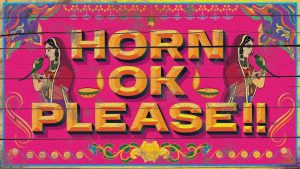Why do Indian trucks say ‘Horn OK Please’? Meaning decoded

If you’ve ever travelled on Indian highways, you’ve likely spotted the phrase “Horn OK Please” painted on the back of trucks. While it’s not legally required, this slogan has become a staple of Indian road culture, sparking curiosity for decades.
There are a few theories behind its origin.
One links it to World War II, when trucks carried kerosene instead of diesel due to shortages. To alert other drivers of the flammable cargo, the words “On Kerosene” were painted, later shortened to “OK” — giving us the now-familiar “Horn OK Please.”
Another theory suggests a TATA marketing strategy. The company once sold a soap brand called “OK” and possibly used trucks to advertise it. This may have helped the term gain popularity.
As for its purpose, “Horn OK Please” served as a safety signal. Older trucks didn’t have side mirrors, so the message instructed drivers behind to honk if they wanted to overtake, ensuring safer manoeuvres on narrow or chaotic roads.
Despite technological advances, the slogan still appears widely — not just for safety, but as part of the vibrant truck art culture. Indian trucks often display religious symbols, quotes, and personal artwork. This phrase has become part of that visual tradition.
In 2015, Maharashtra’s transport department tried to ban the phrase to reduce noise pollution, but the move faced public resistance and failed.
Today, “Horn OK Please” lives on — not just on trucks, but in pop culture, movies, and street art, reflecting the bustling spirit of India’s highways.
PNN
News